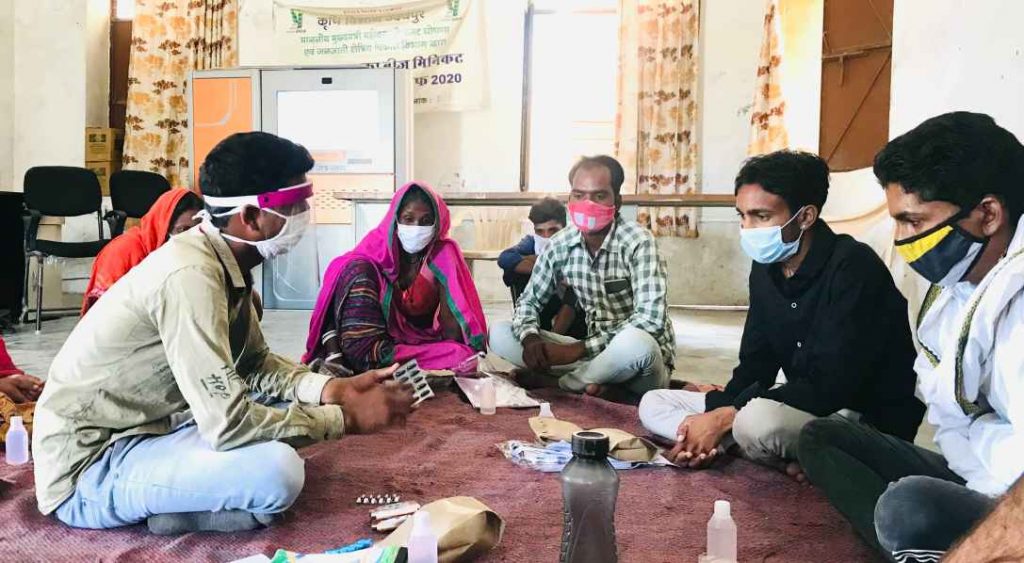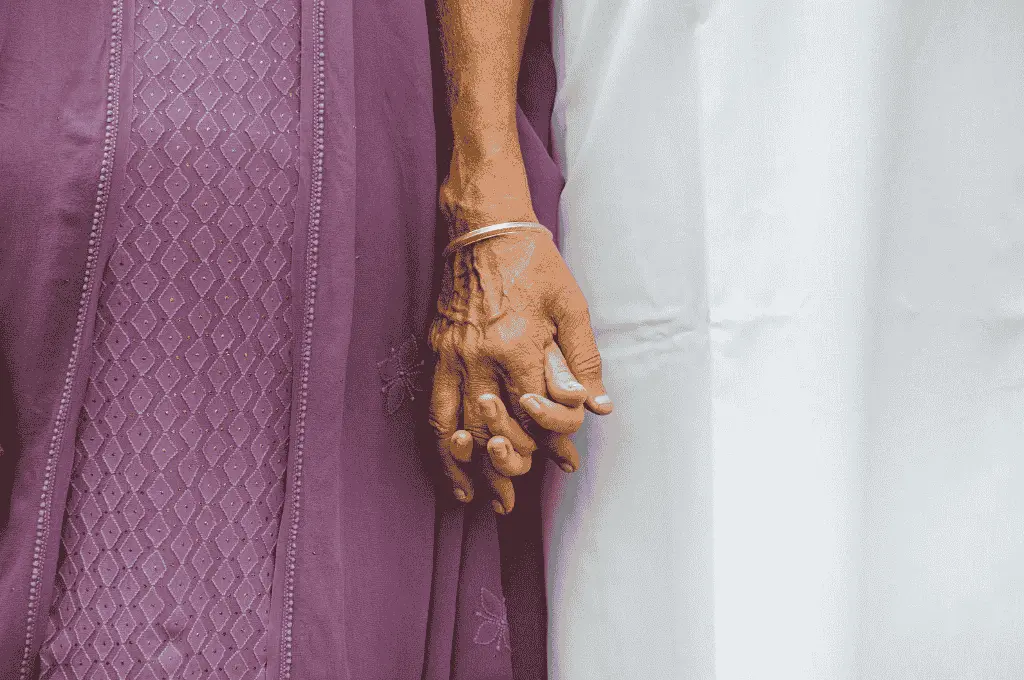Fifteen months after COVID-19 set foot in urban India, it is spreading fast and deep into rural areas. Southern Rajasthan, where we work, saw few cases in 2020—they were limited to migrant men and their families returning from Mumbai, Ahmedabad, and other cities. This year, village after village is seeing large numbers of families affected by the disease and reporting many more deaths than before. Similar reports are coming from other parts of the country.
When the virus reached our cities last year, India went into a lockdown. The cities increased testing, built shelters for people affected with COVID-19, and ramped up admission beds for those with moderate to severe disease burden. They also provided cooked food and rations to those left without food or work. The recently released government guidelines for managing COVID-19 in rural areas are very similar. They recommend increased testing, quarantine centres at the village level for mild cases, and COVID-19 care centres at the block level for those with a disease of moderate severity. Will these measures be enough to check the spread of COVID-19 in rural areas, and provide timely relief to those with severe disease and save lives?
From the beginning of May 2021, in rural southern Rajasthan, village-based volunteers affiliated with a network of organisations have been visiting all households to inquire if any person has COVID-19-like symptoms. Those who report symptoms are provided medicine kits and counseling for home care. Reports from these volunteers show that there is a complete absence of trust, and high degree of suspicion of government systems. Here are some examples of these volunteers’ experiences:
“In the beginning when I would ask if anyone was ill, people would say, ‘no’. They refused to take medicines from me, saying, ‘You will send this information forward and I will be taken to a far away place and will never come back. They will take out my kidneys.’”
“People are refusing to take the vaccine. Some fear that if they take it, they will die within six months. According to them, this (the vaccine) is a means the government is using so that they no longer have to pay pension or provide ration.”
The sentiments are very similar in far-off areas in Chhattisgarh, Odisha, Maharashtra, and other states. Why has this happened?
The breakdown of trust over the years
The connection between the government system and communities was fragile even before the pandemic arrived. The hostile treatment of returning migrants—bundling them into poorly functioning quarantine facilities and forced testing—weakened this further. A year ago, this is what the father of a young man who had returned from Mumbai and had tested positive told us: “Our son walked back from Mumbai, receiving dandas (being beaten with sticks) from the police on the way. He took a much longer route and climbed many hills to avoid meeting the police. On his return, when he was so tired, they took him away from home. All these years nobody came to us. Why are you all coming to our place now? We do not want anything to do with you!”
The vaccination drive and accompanying messages have further cemented this mistrust.
The vaccination drive and accompanying messages have further cemented this mistrust. People are being pushed into taking the vaccine and being threatened that they will not receive their pensions or food rations if they don’t get vaccinated. Messages and videos that feed the rumour mills and spread misinformation are doing the rounds: That people have died after receiving the vaccine, there are nails in the vaccines, and that the vaccine is being mixed into tablets.

At the same time, there are stories of hope. In a far-off village in Banswada, a community volunteer mobilised more than 500 people to receive the vaccine. In neighbouring Rajsamand, the testimonial of an elderly couple who both got vaccinated helped mobilise many others in the village to take the shot.
Bestselling author Stephen Covey said, “Trust is the glue of life. It’s the most essential ingredient in effective communication. It’s the foundational principle that holds all relationships.” The message is clear: To minimise the damage caused by COVID-19, winning back the trust of communities is most important. We share a few essential principles that are helping us slowly reclaim trust among the rural, Adivasi communities in southern Rajasthan.
Place empathy and respect at the core
A narrative often heard is that people in the villages do not cooperate, do not get tests done, nor take treatment. Even when they are very sick, they would rather go to a quack or a traditional healer, as a result of which the disease worsens, and saving them becomes even more difficult.
We need to travel back in time to understand this narrative better. In these areas there has always been a fear of going to a hospital. People remember past experiences, when someone from their village went to a hospital and did not come back alive. “He went walking but came back dead,” is a statement oft heard. Add to this the reality of not having any money in hand, or no one to accompany the sick person. They are also in fear of the staff in the hospitals, as “Wo theek se baat nahi karte” (They do not talk to us properly).
During the pandemic, when travel has been difficult, patient visits at most health facilities have reduced.
COVID-19 and physical distancing has alienated these communities even more. In health facilities, they are being seen from a distance, not touched, and very few investigations are carried out. Men and women have spoken of their hurt and anger, at “not being seen properly”, and at “the medicine being thrown towards them”. Recently in a remote village, a very sick man with falling oxygen levels refused to go to the hospital. We learnt that the entire village was in fear, as a relative had recently visited a hospital and died there. His body came back “in a packet”.
Possible solutions to such seemingly insurmountable challenges also come from the ground. In rural Udaipur, a network of primary healthcare facilities is providing round the clock healthcare, with dignity. Being respectful is an essential element of care. During the pandemic, when travel has been difficult, patient visits at most health facilities have reduced. However, these clinics have continued to draw large number of patients including from areas far away, who come because their relatives tell them, “You get good treatment here”. Many of these patients have taken the vaccine and are our biggest advocates for mobilising their communities.
Communicate honestly
One of the biggest fears among people is that those who receive the vaccine will die within six months. They have heard of people being ill for a month after receiving the shot, and that many are dying. While almost all such news are just rumours, dismissing them outright does not work. We have found that comparing the possible risks caused by the vaccine with those caused by the disease helps to allay fears. We communicate that if one lakh people receive the vaccine, one or two of them may develop a severe reaction or may die. But if one lakh people develop COVID-19, up to 10,000 of them may have severe disease requiring hospitalisation, and up to 2,000 could die.
We have found that comparing the possible risks caused by the vaccine with those caused by the disease helps to allay fears.
Honest communication also necessitates taking science to people and sharing the reasons behind the messages. Thus, if large gatherings at marriages (which are happening very often) are to be avoided, people need to understand that the new strain of the virus is much more infectious, and it is not necessary that all those infected will have symptoms. Thus, a gathering can easily become a superspreader event and usher in much misery for everyone.
Leverage the strength of local influencers
One of our community volunteers, Ramu Bai* is a young woman with a small child. In addition to managing her home and child, she also spends many hours each day climbing one hill after another, to visit households and provide medicine kits to people with COVID-19 symptoms. In the current atmosphere, which is marked by fear, some families have fought with her and asked her never to visit them again. Ramu Bai says, “I do not think much about these things (the fights). My work is to visit them and I will keep doing this.” In another village, a group of young men tell us, “Our parents are not agreeing to take the vaccine. We have decided that we will take the vaccine ourselves first. Once we do, we are sure our parents will also agree.”
There are many such influencers in the community, including the ASHAs, panchayat members, and even shopkeepers. Their own conviction is sure to lead to a ripple effect.
Take solutions to people
“The CHC where they do vaccination is 25 kilometres away. Please ask them to do it near our village, as they did for the first dose. People will not get it done otherwise.” These are the words of a wise old man which resonate with what many in these villages are saying. Maharashtra and Kashmir have already shown that taking the vaccine closer to people bolsters vaccination rates.
In Rajasthan, after a long gap, village-level vaccination sessions have resumed. Continuing these regularly—as is the practice with immunisation sessions for young children and pregnant women—will go a long way in promoting uptake of the vaccine.
June 2021 has ushered in a silver lining to the cloud that is the pandemic. The second wave appears to be subsiding, vaccines are going to be sourced nationally, and made available for free, for all. Reclaiming communities’ trust in the public health system is critical to dispel these clouds.
*Name changed to maintain confidentiality.
—
Know more
- Read about how a remote Adivasi village is fighting vaccine hesitancy.
- Learn about some of the misconceptions associated with COVID-19 vaccination.
- Understand more about how vaccine hesitancy is embedded in a lack of trust in the public health system.
Do more
- Connect with the authors at info@bhs.org.in to learn more about their work or volunteer with them.






